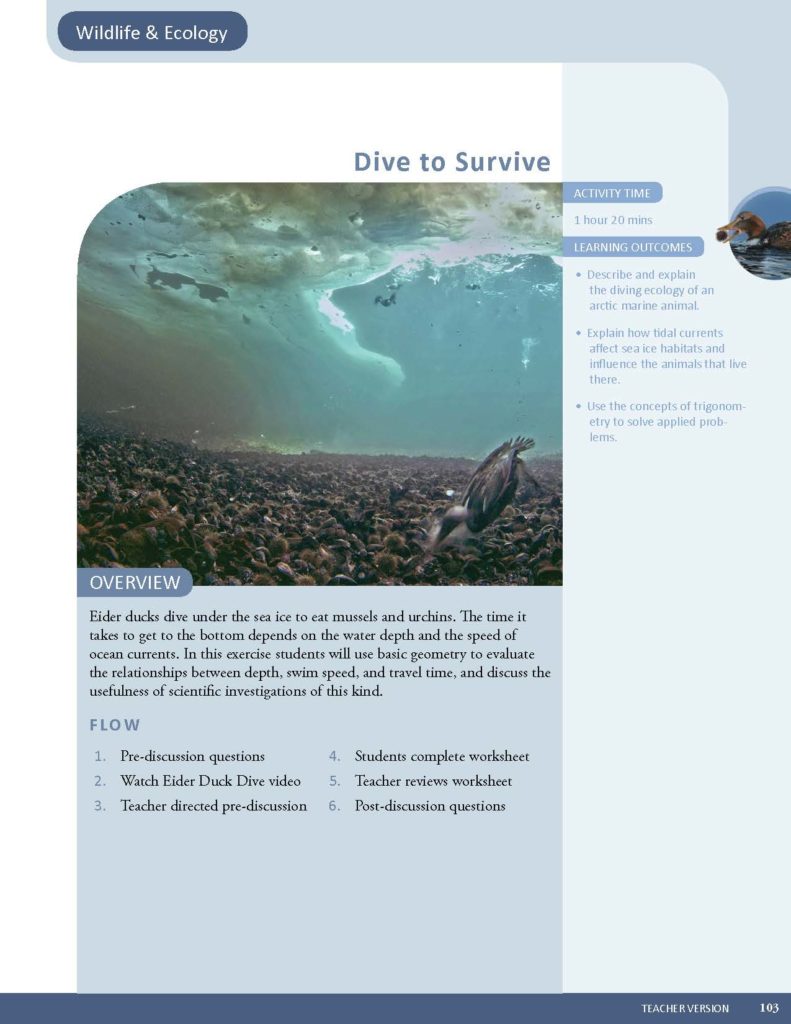Eider ducks dive under the sea ice to eat mussels and urchins. The time it takes to get to the bottom depends on the water depth and the speed of ocean currents. In this exercise, students will use basic geometry to evaluate the relationships between depth, swim speed, and travel time, and discuss the usefulness of scientific investigations of this kind. This lesson plan video is ~24 minutes long and is based on the Arctic Eider Society classroom lesson plan on Dive to Survive (meant for grades 11-12).
Mini-lesson Required Materials
- Pen
- Graph Paper or printed out worksheet
- Account on SIKU.org
Lesson Plan Preview
Downloads
Links
Dive to Survive SIKU Presentation
This presentation accompanies the Dive to Survive lesson plan. It provides SIKU resources to assist with class discussion and includes videos to help students visualize concepts in the lesson.
Eider Studies Video
A special feature from the film People of a Feather which touches on how eiders survive in a harsh climate
Making Eider Skin Parkas
See how the traditional Eider parkas were made for our film People of a Feather
Eiders Diving Sequences
Watch eiders dive and hunt under the sea ice
Underwater Time-lapse of Eider Diving and Urchins
Underwater time-lapse captured over several hours of eiders diving to the seafloor in a polynya to catch sea urchins and mussels.
Group of Eider Ducks Diving
Groups of eiders dive from the surface of a polynya.
Eider Swims Against the Current
Watch as an eider swims against the very strong current of a polynya.
Polynya with Eider Timelapse
Time-lapse from a surface towner over the course of a day of eiders diving at a polynya.
Dive Video #1
Video of Eider duck diving for Worksheet 1
Dive Video #2
Video of Eider duck diving for Worksheet 2
Tide table for Babs Bay
Tide table to be used in the lesson extension.
